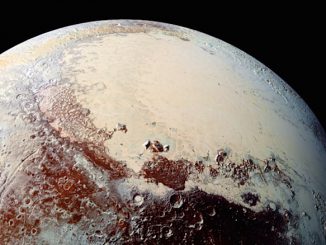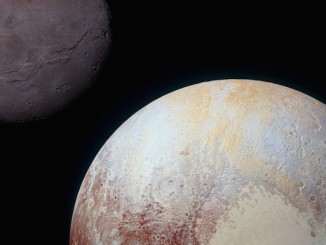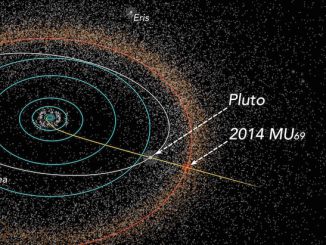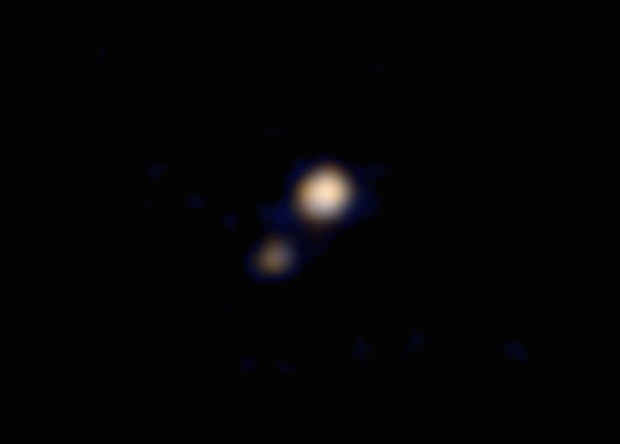
Barreling toward a July 14 flyby of Pluto, NASA’s New Horizons spacecraft has returned its first color image of the distant world and its moon Charon, whetting the appetites of scientists as the probe prepares to begin taking the best-ever photos of the Pluto system beginning next month.
The New Horizons probe made the color composition April 9 at a range of about 71 million miles.
“You can see immediately a number of major differences,” said Jim Green, chief of NASA’s planetary science division. “Pluto seems to be very bright, it seems to be redder. Charon is now dimmer than Pluto. These are already tantalizing glimpses of this system.”
Next month, cameras on New Horizons will be able to take sharper images of Pluto than possible with the Hubble Space Telescope.
“Pluto is still a point of light from our vantage point in the solar system, but starting in May Pluto will get the highest-resolution images ever, and it’s going to get better every day from there,” said Cathy Olin, deputy project scientist for the New Horizons mission at the Southwest Research Institute. “Every day we travel almost a million miles closer to Pluto. It’s going to be really exciting, and each day is going to reveal something new.”
New Horizons — roughly the size and shape of a grand piano — will zip by Pluto on July 14, flying less than 7,800 miles from the dwarf planet’s icy surface. Pluto will be more than 3 billion miles from Earth when it gets a fleeting visit from New Horizons.
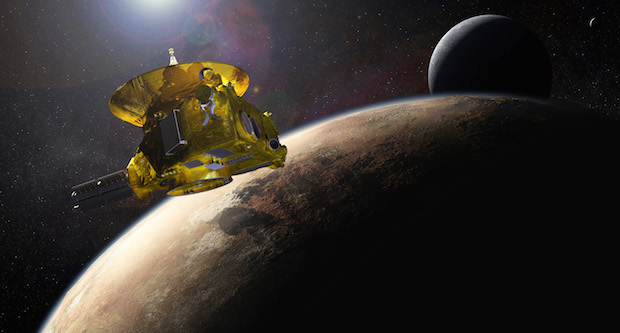
Scientists say the mission will complete the initial reconnaissance of the solar system. By the end of the 1980s, robotic probes had visited all of the rocky planets like Earth and flew by the outer gas giants.
After New Horizons launched in January 2006, the craft got a boost from the immense tug of Jupiter’s gravity to slingshot the probe toward the outer solar system.
Pluto is part a family of unexplored worlds called Kuiper Belt Objects that orbit the sun beyond Neptune, and New Horizons is the first mission to visit one of the little-known bodies.
When New Horizons arrives at Pluto, the robot’s cameras will see features as small as a city block. The probe will also examine what minerals are present on Pluto and its moon Charon, and take long-range images of Pluto’s four other known satellites — and look for more.
“This is a scientific wonderland,” said Alan Stern, the mission’s principal investigator. “It is a binary. Pluto and its large Texas-sized moon Charon are like nothing we have ever visited in the history of planetary exploration, and surrounding that binary is a circum-binary system of at least four more much smaller moons.
“Pluto itself is a very complex body,” Stern said. “It has an atmosphere, it has seasons. The surface markings have been moving over time, probably indicating shifting snows and some sort of process of exchange between the atmosphere and the surface.”
Imagery taken by New Horizons in the next few weeks will determine whether ground teams need to adjust the spacecraft’s trajectory toward Pluto. If necessary, engineers have reserved a placeholder for a course correction maneuver May 15.
New Horizons will collect and record the bulk of the data the week of the flyby in July, but it will continue making observations for months after the encounter. Pluto’s huge distance from Earth will limit the rate New Horizons can downlink the contents of its data recorder, and scientists do not expect the full data haul back on the ground until around October 2016.
“In May and June, we will begin atmospheric studies and composition studies of the surface ices,” Olkin said. “In July, we’re going to be hitting Pluto with everything we have. That’s going to be showtime.”
Follow Stephen Clark on Twitter: @StephenClark1.

